Perennial plants are a type of plant that lasts for more than two years. There is a lot of variety in these types of plants. Some perennial plants can even last quite a few years when taken care of well.
Red perennials, in particular, are quite sought after, thanks to their striking red color and long-lasting nature. These types of plants are a great addition to any garden.
In this article, we will be discussing red perennial flowers you can plant in your garden. We will also mention the ideal conditions needed to grow these plants.
There is a massive variety of plants on this list, and each has a unique set of requirements. Whether you are a casual gardener looking for a low-maintenance plant for your home garden or an experienced gardener looking for that really special plant, we probably have one for you on this list.
14 Amazing Red Perennial Flowers
1. Cardinal Flower

Starting off the list, we have the Cardinal flower. Also known by its scientific name “Lobelia Cardinalis L,” this perennial has an intensely red-colored flower which makes it a particularly striking plant to look at.
It has five petals attached to the corolla; the petals are spread out horizontally, giving it a unique look. These flowers are known to attract Butterflies and Hummingbirds as those are the ideal pollinators for this Perennial.
Growing Conditions:
The ideal growing conditions for this flower would be full sun, the roots require a lot of water, so it is ideally planted in very moist soil.
Their USDA hardiness zones are 4–9.
2. Peony
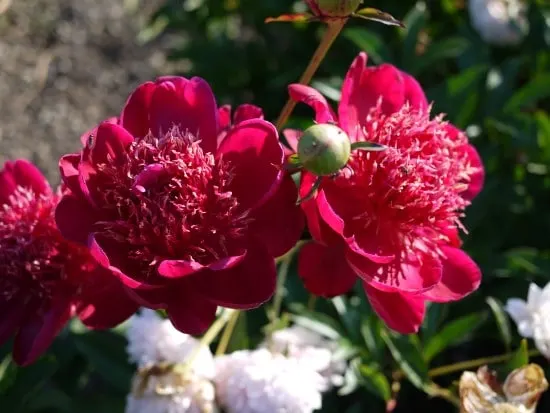
Peonies are very varied plant species. Usually, we can find these types of plants in shades of pink, but they are also available in beautiful shades of red. Red Peonies can range from being maroon, orange-brown, and bright blood red.
Their flowers are pretty big, so just a few of these plants will have an impact on your garden. These flowers are also known for their beautiful smell.
Growing Conditions:
These plants prefer sunny conditions and soil with good drainage. The soil should also be neutral or slightly alkaline. Acidic soil is not recommended.
Their USDA hardiness zones are 3–8.
3. Oriental Poppies
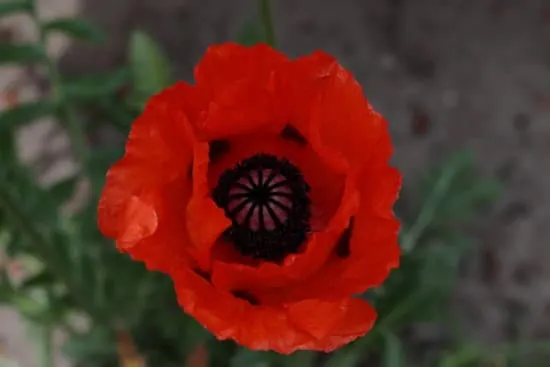
These plants have been a favorite amongst gardeners for thousands of years. The reason for that is simple, these plants don’t require a lot of special attention and last many years. They blossom during early spring and fall.
They have a very vibrant red-orange color; we can find these plants in other color varieties as well.
Growing Conditions:
These plants are best placed on nice and stable ground; avoid planting them on soggy ground. Ideally, they should receive full sunlight for at least 6 hours a day. They are low maintenance and only require fertilization once a year.
The USDA hardiness zones for Oriental Poppies are 3–9.
4. Tulips
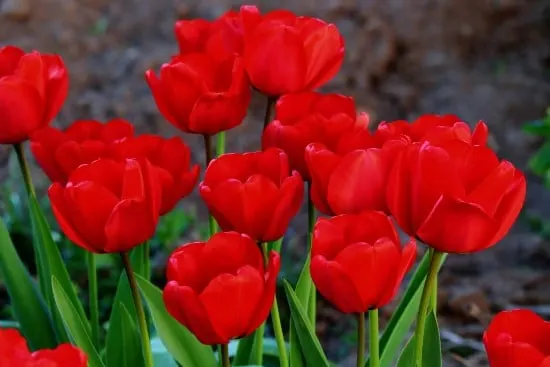
Tulips have large and brightly colored flowers. These plants are usually used in different color combinations for gardens. Red Tulips are a common red perennial flowering plant that is used with a host of other Tulip colors.
Their flowers are known to be symmetric and have a cup or a star-shaped pattern. Ideally, Tulips should be planted in mid-autumn or early December, depending on the location. These plants grow much quicker than other plants, so you run the risk of them freezing in the winter if planted too early.
Growing Conditions:
Tulips prefer full or afternoon sunlight. Ideally, they should be planted in crumbly soil that is well-drained. They prefer a full or afternoon sun but take care that they don’t get too warm.
The USDA hardiness zones for Tulips are 3–8.
5. Coleus
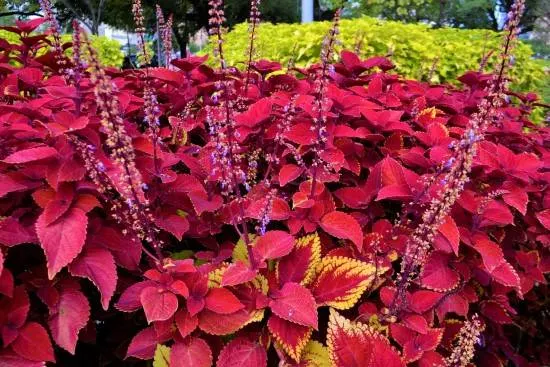
This plant has been popular since before Victorian times. Being native to Southeast Asia, these plants have been hybridized into many different varieties. These plants have a color combination of green, pink, red, maroon, etc.
These plants are quite easy to grow; their roots grow quite rapidly. They need to be watered a little more frequently than other plants, especially a newly planted Coleus.
Growing Conditions:
Coleus should be planted in well-drained soil, and depending on the variety, they prefer areas that have a little bit of shade. Other varieties of Coleus plants can tolerate the sun.
The USDA hardiness zone for Coleus plants is 11.
6. Red Salvia
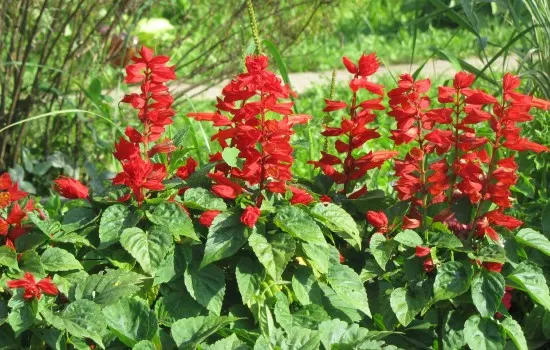
These plants are a popular type for container gardens. The Red Salvia plant is native to Brazil and spreads its flowers vertically, giving it a unique look. They are a little sensitive to the cold, so they are not ideal for areas where temperatures dip below 32°F.
Their flowers are bright red, with other color varieties being purple, pink, or cream. The flowers are quite small and grow in a circular pattern around their spikes.
Growing Conditions:
These plants prefer full sun to a partial shade; the soil should be moist and well-drained. The pH level of the soul should be neutral to slightly acidic.
The USDA hardiness zone for Red Salvia plants is 10–11.
7. Virginia Creeper
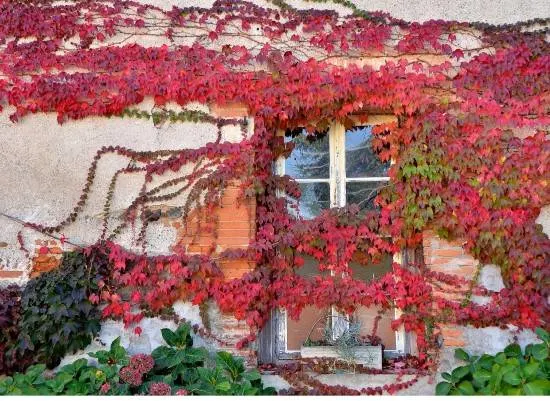
This is a fast-growing vine that is very resilient. It can grow on nearly any soil and light conditions. In addition to that, these plants do not require a lot of attention and care, so they are ideal for people who can’t spend too much time looking after the plants.
In spite of being so low maintenance, these plants are still incredibly beautiful. They have five-pointed leaves, and once the ideal temperatures are reached, these leaves will turn into a beautiful crimson red color.
Growing Conditions:
This plant can be grown in many different conditions; it can grow in the sun or shade. Soggy, dry, or even slightly alkaline soils can be used to grow these plants.
The USDA hardiness zones for Virginia Creeper are 3–9.
8. Zonal Geranium
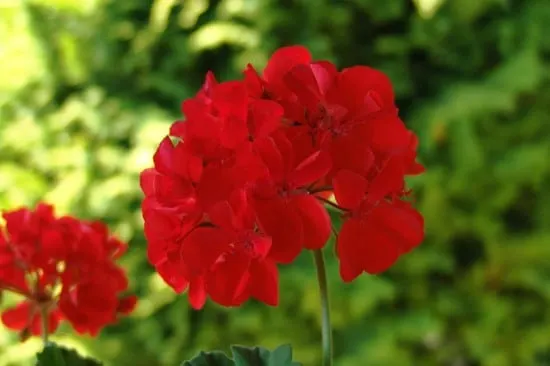
These plants are known for their beautiful colors and lovely scent. Native to South Africa, these plants were initially introduced to Europe via Dutch traders.
These plants are great for flowerbeds or containers alike. Mostly, they are grown as annuals, but if the climate is warm enough, they can even be grown as perennials.
Growing Conditions:
Ideally, these plants should be placed in a full-sun or a partial shade environment. They should receive 6 to 8 hours of daily sunlight. The soil conditions should be well-drained and moist.
The USDA hardiness zones for Zonal Geranium plants are 9–12.
9. Maltese Cross Flowers
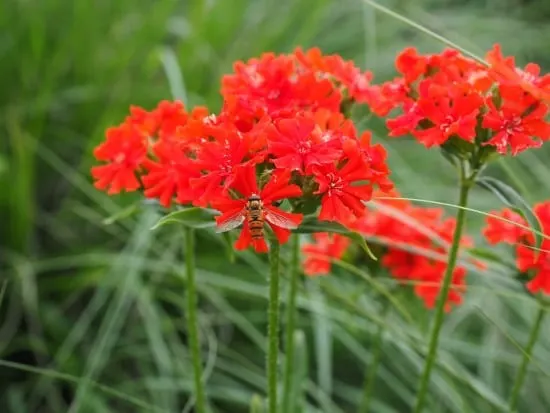
This plant has flowers that are densely packed in large, round clusters. These plants are easy to grow and are long-lived. They are known to attract Butterflies and Hummingbirds, so you can be sure to beautify your garden with more than just flowers.
They can even be found in white or pink colors. Due to their long stature with a thick flowered top, these plants can have a tendency to droop at a certain height. To prevent this, you can support them with stakes.
Growing Conditions:
These plants prefer well-drained soil; they can grow under full sun exposure.
The USDA hardiness zones for these plants are 4–10.
10. Hardy Mum
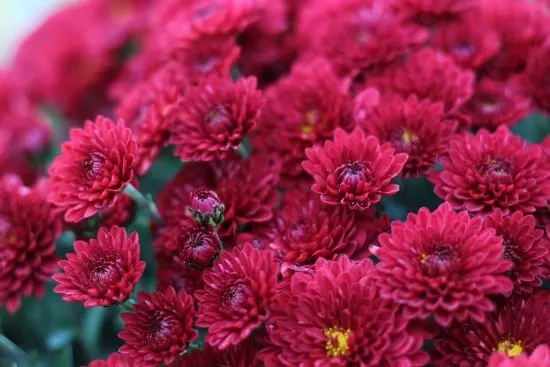
These plants usually bloom in the fall; their blooms are also known for being long-lasting. They have a unique look where when they blossom, they appear to be a ball of flowers. This unique look makes them quite sought-after.
Hardy mums are quite resistant; they generally don’t attract many diseases or have a lot of pests. These plants are also not so high on maintenance. You can plant them either in containers or on the ground.
Growing Conditions:
These plants prefer moist but well-drained soil. Ideally, they should be getting full sun exposure.
The USDA hardiness zones for these plants are 5–9.
11. Hibiscus
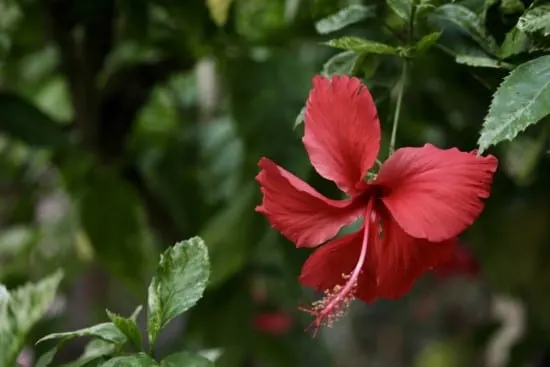
The Hibiscus plants are easily identified thanks to their large round flowers. The leaves of these plants have a unique near-black color to them, with the flowers having a rich, deep red color.
This color combination gives this plant a truly stunning look. They attract butterflies and bees. They are also known to have rapid growth. They can be a little maintenance-heavy, as you may need to water them well for the ideal look.
Growing Conditions:
The Hibiscus plants prefer moist but well-drained soil. The plants can grow with either full sun or part shade conditions.
The USDA hardiness zones for these plants are 4–9.
12. Coral Bells
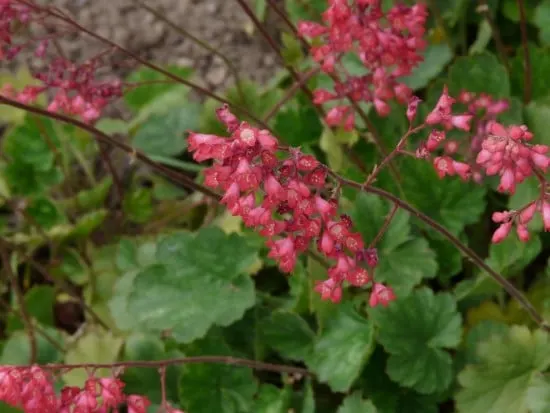
Coral Bell plants are known for having a really unique mix of foliage colors. Their foliage colors can range from bronze to purple, with more colors in between. The flowers of these plants are quite small and have a beautiful pink color to them.
You can grow them in containers or in your garden. The natural habitat of these plants is wooded areas. So, when growing them at home, you should try to provide similar conditions. They don’t require much maintenance.
Growing Conditions:
These plants prefer soil that is well-drained and enriched with compost. Preferably, they should be placed in the shade or get filtered sunlight.
The USDA hardiness zones for the Coral Bell plants are 4–9.
13. Coneflower
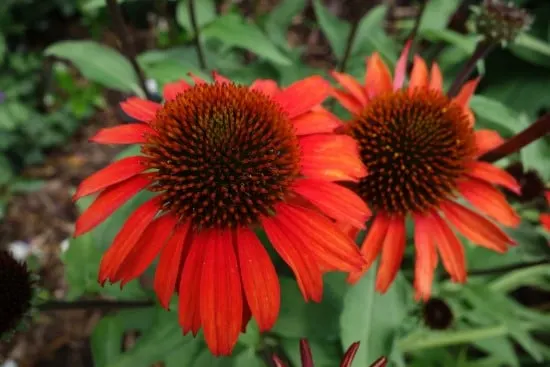
These are rugged plants that are resistant to heat and drought; in addition to this, they are easy to grow, and their blooms last for months. Their flowers come in various shades, such as red, orange, pink, and more. There is also quite a bit of variety in the shape of their flowers.
These plants are great for attracting birds like flinches; these birds feed on the seeds of the Coneflower plant. In addition to birds, the Coneflower plants also attract butterflies.
Growing Conditions:
These plants thrive in a full sun environment; if the light is too excessive, then an afternoon shade should be provided. The ideal soil is well-drained, but the Coneflower can still grow in less ideal conditions.
The USDA hardiness zones for these plants are 3–8.
14. Threadleaf Coreopsis
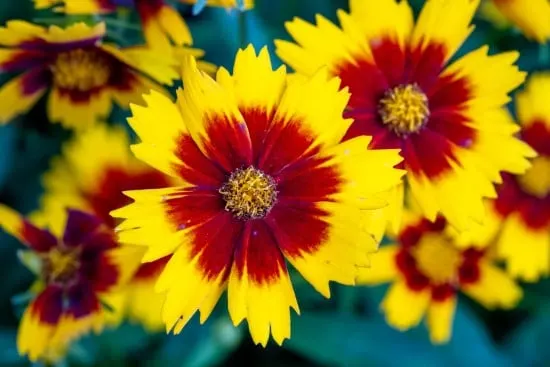
This plant is generally found in dense clumps. They are incredibly resilient and are known to thrive in even infertile, rocky conditions. In addition to that, these guys can handle extreme levels of heat or humidity for plants.
For these features, you may expect that the flower of this plant isn’t up to the mark, but it is still very beautiful for how easy it is to maintain. If you get one of these plants, you can basically forget about them, and they will be doing just fine.
Growing Conditions:
These plants can grow basically under any condition. The only thing you need to watch out for, however, is soil that is too moist as they are adapted for much drier soils.
The USDA hardiness zones for the Threadleaf Coreopsis are 3–9.
Conclusion
If you are looking for red perennial flowers for your garden, then you will be amazed by the different varieties of plants that are available.
The plants in this list are very diverse, and each has a unique set of requirements.
If you are looking for plants that are low in maintenance, then you should go with plants like the Oriental Poppy, Virginia Creeper, Hardy Mum, Coral bell, or Threadleaf Coreopsis.
Listed at #3, #7, #10, #12, and #14, these plants are ideal for the gardener who just wants to add beautiful red color to their garden with minimal maintenance.
The Threadleaf is particularly special in this case; the plant can survive in the most extreme conditions and basically requires zero maintenance.
While all the plants on this list smell great, the Peony and the Zonal Geranium are particularly well known for their beautiful scents. These plants are listed at #2 and #8, respectively.
We all know that plants are great at attracting bees, but if you are trying to avoid that, then we would recommend that you go for plants like the Cardinal Flower, Maltese Cross, and Coneflower.
Placed at #1, #9, and #13 respectively. These plants are well known for attracting Hummingbirds and Butterflies. The Coneflower is particular in this regard, as it attracts songbirds that feed on its seeds.
